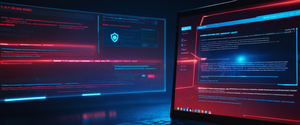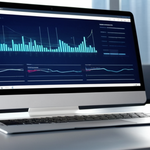
Macro malware represents one of the most persistent and dangerous threats to organizational cybersecurity in the contemporary threat landscape, representing a critical vulnerability that bridges legitimate productivity tools with malicious intent. This comprehensive analysis examines how macros embedded within Microsoft Office documents have become a primary attack vector for threat actors ranging from financially motivated criminals to advanced persistent threat groups, and establishes a framework for understanding both the technical mechanisms of macro-based attacks and the multi-layered defensive strategies necessary to protect organizations and individuals from this evolving threat. The research presented in this report synthesizes current best practices, emerging threats, and advanced detection methodologies to provide a complete picture of macro malware threats and how organizations can implement comprehensive protection strategies that extend macro security into their broader antivirus and ransomware protection frameworks.
Understanding Macro Malware: Foundations and Technical Architecture
Macros are fundamentally automation tools designed to enhance productivity within Microsoft Office applications by allowing users to record sequences of commands that can be repeated with a single action or button press. However, this same power that makes macros valuable for legitimate business purposes has made them an attractive target for cybercriminals who seek to abuse the functionality for malicious purposes. A macro virus is specifically defined as a type of computer virus that could be stored in macros within a Microsoft 365 file, such as a document, presentation, workbook, or template, or within any ActiveX control, COM add-in, or Microsoft 365 add-in. These malicious macros represent a particularly insidious form of malware because they leverage the implicit trust users place in common business documents, transforming seemingly benign files into delivery mechanisms for sophisticated attack payloads.
The technical foundation of macro-based attacks rests on the ability of macros to execute code in Visual Basic for Applications (VBA), a programming language deeply integrated into Microsoft Office applications. When a user enables macros in a Microsoft Office document, the embedded VBA code executes with the same permissions and access rights as the user who opened the file. This means that a malicious macro can perform virtually any action that the compromised user account can perform on the system, including downloading additional malware, stealing sensitive information, modifying system files, and establishing persistent backdoor access. The power of macros extends beyond VBA to include older Excel 4.0 macros, commonly referred to as XLM macros, which use a different architecture based on formulas stored within spreadsheet cells rather than dedicated macro modules.
Modern Microsoft Office files use distinct file extensions to indicate the presence of embedded macros as a basic security indicator. A standard Microsoft Word document uses the .DOCX extension, but when a macro is added to the file, it becomes a .DOCM file. Similarly, Excel workbooks transition from .XLSX to .XLSM when macros are embedded, and PowerPoint presentations change from .PPTX to .PPTM. This file extension naming convention allows both users and security systems to identify potentially risky files at a glance, creating one of the first layers of defense against macro malware. However, threat actors frequently rely on social engineering to convince users to enable macros regardless of the file extension or security warnings, leveraging psychological manipulation techniques that have proven remarkably effective across diverse organizational environments.
The evolution of macro security in Microsoft Office has significantly changed the landscape for both defenders and attackers. Historically, macro malware was fairly common several years ago because macros ran automatically whenever a document was opened without requiring any user intervention. This default behavior meant that simply opening a malicious document would trigger the embedded malicious code, making macro-based attacks extraordinarily effective. However, in recent versions of Microsoft Office, macros are now disabled by default, requiring users to explicitly enable them before the code can execute. This fundamental shift in default behavior has forced malware authors to invest considerably more effort into social engineering, as they now need to convince users to actively enable macros by clicking an “Enable Content” button or similar control that appears when a document with disabled macros is opened.
Delivery Mechanisms and Social Engineering Tactics in Macro Malware Campaigns
Macro malware does not spontaneously appear on users’ systems but rather follows predictable delivery pathways that have been refined through years of criminal innovation and testing. The primary delivery mechanism for macro malware remains email, with malicious Office files distributed as email attachments or enclosed within ZIP files that are intended to evade initial email security scanning. These malicious documents are typically given names specifically designed to entice or scare users into opening them, names that create false urgency or appeal to human curiosity. Common deceptive filenames include documents that appear to be invoices, receipts, legal documents, shipping notifications, tax forms, or employment-related files that would be expected in typical business communications. By contextualizing the malicious attachment within a realistic business scenario, attackers dramatically increase the probability that a recipient will open the file without suspicion.
The social engineering component of macro malware attacks represents one of the most sophisticated aspects of modern threat campaigns, as attackers have developed increasingly nuanced psychological manipulation techniques that exploit well-documented human cognitive biases and emotional triggers. Threat actors leverage several key psychological principles to maximize the effectiveness of their campaigns. First, they create artificial urgency by using language that suggests time-sensitive consequences for non-compliance, such as “Document Expired,” “Immediate Action Required,” or “Security Update Required.” Second, they generate fear through fake warnings and official-looking messages that suggest negative consequences if the recipient does not comply, such as messages warning about account closures or security breaches. Third, they exploit curiosity by presenting unusual or interesting attachments that appeal to the recipient’s natural desire to explore unexpected content. Fourth, they impersonate authority figures or trusted entities, presenting false documents supposedly from corporate leadership, government agencies, financial institutions, or internal company departments with which the recipient deals regularly.
The sophistication of social engineering tactics has increased dramatically with the advancement of generative artificial intelligence, which enables threat actors to create highly personalized phishing campaigns at scale. Attackers can now use AI tools to draft emails in flawless language that perfectly mimics the tone and style of trusted senders, generate convincing fake branding and formatting, and adapt their messaging to specific organizational contexts or industry vertical targeting. The accessibility of these tools has significantly lowered the barrier to entry for conducting effective macro-based phishing campaigns, meaning that even relatively unsophisticated threat actors can now deploy campaigns that rival those conducted by organized criminal groups or nation-state adversaries. This democratization of attack capability has resulted in a corresponding increase in the volume and sophistication of macro malware campaigns observed across all organizational sectors.
Once a user opens a malicious Office document and enables macros, the embedded malicious code begins executing immediately. The typical attack sequence follows a predictable progression that security researchers have documented across numerous threat campaigns. The macro code typically begins by executing PowerShell commands, which are particularly valuable to attackers because PowerShell provides powerful system access and has become increasingly difficult to detect due to its legitimate use within Windows environments. These PowerShell commands are frequently obfuscated through various encoding and string manipulation techniques to evade signature-based detection mechanisms. The macro establishes outbound connections to attacker-controlled command-and-control servers to download additional malware payloads, which might include ransomware, information stealers, banking trojans, or other modular malware designed for specific attack objectives. Some macro attacks are designed specifically as delivery mechanisms for ransomware, with the initial macro serving as a downloader that pulls the actual ransomware payload onto the victim’s system.
The Role of Macro Malware in the Ransomware Attack Chain
Macro malware has become particularly significant within the context of ransomware attacks, as cybercriminals have recognized the effectiveness of macros as an initial access vector that bypasses many traditional security measures focused on executable file detection. In ransomware attack chains, macros typically serve one of several critical roles that enable subsequent stages of the attack. First, macros can serve as the initial access mechanism, gaining the first foothold on a victim’s system through the social engineering delivery of a malicious document. Second, macros can facilitate privilege escalation by executing commands that elevate the compromised user’s access permissions, allowing the attacker to move from a standard user account to administrative or system-level privileges. Third, macros enable lateral movement across networks by identifying additional systems on the network and attempting to compromise them using credentials harvested from the initially compromised system.
The payload deployment phase represents the critical transition point where a macro-based attack escalates from initial infiltration to active encryption and data exfiltration. During this phase, the macro executes additional scripts or commands that download and execute the ransomware payload, transforming the attack from a reconnaissance or infiltration phase into active file encryption that directly impacts organizational operations. Some advanced ransomware campaigns employ double extortion tactics, where malicious macros facilitate data exfiltration alongside file encryption, allowing attackers to threaten to publicly release sensitive data if the ransom is not paid. This combination of file encryption and data theft dramatically increases the pressure on victims to pay ransoms, as organizations fear both the operational impact of encrypted files and the reputational and regulatory consequences of sensitive data breaches.
Technical Analysis of Macro Malware Architecture and Evasion Techniques
The technical architecture of macro malware has become increasingly sophisticated, with threat actors employing advanced obfuscation and evasion techniques to avoid detection by antivirus software and security appliances. Obfuscation represents one of the most common approaches to evading static analysis, with attackers employing multiple distinct obfuscation techniques within a single macro including Hex encoding, Base64 encoding, string reversal, and custom encoding algorithms that transform malicious strings into unrecognizable data that is only decoded at runtime when the actual attack logic executes. By obfuscating suspicious strings such as URLs, file names, and API calls, attackers prevent static analysis tools from easily identifying the malicious intent of the macro code, forcing defenders to rely on dynamic analysis or runtime behavior monitoring to detect the actual attack payload.
One particularly sophisticated evasion technique that has become increasingly prevalent in recent years involves VBA purging, a method that removes compressed VBA source code from Office documents while retaining the compiled PerformanceCache version that allows the malicious code to continue executing. This technique exploits the fact that Office applications will execute compiled VBA code from the PerformanceCache section if the version and architecture information match the compilation environment, but if there is any mismatch, the application will attempt to decompress the source code to recompile it. By removing the compressed source code entirely, attackers create a situation where traditional VBA extraction tools cannot locate and analyze the malicious source code, yet the compiled code continues to execute normally when opened in an Office application. This approach represents a significant challenge for security teams because it makes both static analysis and traditional macro extraction challenging, requiring more advanced analysis techniques to identify the malicious behavior.
Another emerging evasion technique involves VBA referencing, where attackers create two separate documents with different roles within the attack scheme. The first document, placed on the attacker’s server, contains the actual malicious macro code. The second document, sent to the victim, contains a VBA macro that simply calls functions from the malicious document hosted remotely. This approach enables attackers to differentiate between sandboxed analysis environments and actual user systems, with the remote document returning benign or empty functions when accessed from a sandbox environment but unleashing malicious functionality when accessed from a user system. Testing has demonstrated that this VBA referencing technique successfully evaded all seven leading sandbox providers tested, with malicious files opening normally on user machines while appearing benign during automated analysis.
Excel 4.0 macros, commonly known as XLM macros, present particularly challenging detection scenarios because they exist as formulas within individual spreadsheet cells rather than as dedicated code modules like VBA macros. This architectural difference makes XLM macros significantly more difficult to extract and analyze, as security tools must perform cell-by-cell inspection of potentially thousands of cells to identify all macro code within a spreadsheet. Additionally, XLM macros can exploit control flow statements such as RUN, CALL, and GOTO to jump between non-contiguous cells, making the execution path difficult to follow through static analysis. The obfuscation capabilities of XLM macros are equally sophisticated, with attackers hiding URLs and file names through simple string manipulations that are difficult to detect without dynamic execution.

Notable Macro-Based Threats and Real-World Attack Campaigns
Emotet represents one of the most significant and persistent macro-based threats in recent cybersecurity history, demonstrating the ongoing viability and effectiveness of macro-based attacks despite years of security industry efforts to mitigate them. Originally identified in 2014 as a relatively simple banking Trojan targeting financial data through malicious Microsoft Word documents, Emotet evolved significantly over time, becoming a prolific malware platform and modular delivery mechanism for other malicious payloads. The malware operates as a loader that infiltrates systems, establishes persistence, and deploys additional modular malware components, with the infection typically beginning when a user opens a malicious attachment or clicks a link in a phishing email that initiates the download of a payload.
Emotet’s particular sophistication lies in its ability to harvest credentials and email content from compromised systems, enabling the malware to conduct self-propagating email campaigns that impersonate trusted contacts and leverage hijacked email threads to increase the likelihood that recipients will open malicious attachments. Once inside a network, Emotet uses exploit kits, password brute forcing, and network scanning tools to move laterally, identifying additional machines to infect and gradually expanding its footprint throughout the organization. Between 2017 and 2020, Emotet emerged as a prolific malware platform supported by organized threat actors who conducted large-scale spam campaigns and malware distribution operations. Although a coordinated law enforcement operation temporarily disrupted Emotet operations in January 2021, the malware resurfaced in November 2021 with new evasion techniques, including the use of password-protected ZIP files and Excel 4.0 macros specifically designed to evade email gateway scanning.
Beyond Emotet, numerous other macro-based malware families have demonstrated the ongoing significance of this attack vector. The search results document macro malware downloading threats from families including Ransom:MSIL/Swappa, Ransom:Win32/Teerac, TrojanDownloader:Win32/Chanitor, TrojanSpy:Win32/Ursnif, Win32/Fynloski, and Worm:Win32/Gamarue. Each of these malware families represents distinct criminal operations with specific objectives, ranging from financial theft to data exfiltration to ransomware deployment. Specific macro viruses with historical significance include Concept, one of the earliest macro viruses that spread rapidly in the late 1990s and was known for its ability to duplicate itself across Word documents; Melissa, a famous virus that spread via email attachments and caused damage affecting many businesses through its rapid propagation; and W97M/Gimmiv, which was particularly tricky as it spread unnoticed within Word document macros until triggered.
Detection and Analysis Methodologies for Macro Malware
Effective detection of macro malware requires a multi-faceted approach that combines static analysis, dynamic analysis, and runtime behavior monitoring to identify threats that deliberately employ sophisticated obfuscation and evasion techniques. Static analysis involves examining the structure and contents of Office files without executing them, utilizing specialized tools designed to analyze Office document formats and extract embedded macro code. The oletools Python package represents one of the most widely used and effective tools for static macro analysis, providing several complementary tools including oleid, which analyzes OLE files to detect specific characteristics usually found in malicious files; olevba, which extracts and analyzes VBA macro source code; and MacroRaptor, which detects malicious VBA macros through heuristic analysis. These tools can identify suspicious keywords commonly found in malicious macros, auto-executable macros that run when a document opens, and potential indicators of compromise such as URLs and IP addresses embedded within obfuscated strings.
Dynamic analysis involves executing Office files in isolated environments where their behavior can be monitored without risk to production systems or sensitive data. Sandbox environments such as Joe Sandbox provide comprehensive dynamic analysis of Office files by observing their behavior, monitoring network connections, tracking registry modifications, and logging process creation activities that reveal the true intent of macros that may appear benign during static analysis. This approach is particularly valuable for detecting obfuscated macros where the malicious code is intentionally obscured to defeat static analysis tools. However, as discussed previously, sophisticated threat actors have developed sandbox evasion techniques that detect the sandbox environment and behave benignly during automated analysis while executing malicious code when opened on real user systems.
The Antimalware Scan Interface (AMSI) represents a significant technological advancement in runtime macro detection, providing a mechanism for Office applications to scan macro code and other scripts at the moment of execution, before any damage can occur. AMSI integrates directly into Windows 10 and later operating systems, allowing antivirus software to inspect PowerShell commands, VBScript, JavaScript, and VBA macros through a unified interface that provides deep visibility into script content, including de-obfuscated data and the true behavior of heavily obfuscated attack code. For Office VBA macros specifically, AMSI enables Windows Defender and other security solutions to scan macros at runtime and check for malicious behavior, with the capability to block macro execution if malicious intent is detected. For Excel 4.0 (XLM) macros, Microsoft recently expanded AMSI integration to provide runtime scanning that logs all functions and parameters invoked during macro execution, allowing security solutions to identify malicious behavior even when the macro code is heavily obfuscated with complex formula references and control flow statements.
Machine learning and behavioral analysis approaches complement signature-based and heuristic detection by identifying anomalous patterns in macro code that deviate from typical benign macro behavior. These approaches analyze characteristics such as the number of external connections attempted, the types of system APIs called, registry modifications performed, and file system activities, building statistical models of normal macro behavior against which suspicious macros can be identified. Threat intelligence integration further enhances detection capabilities by leveraging collective knowledge from security researchers across the industry regarding known attack indicators, tactics, and techniques, enabling organizations to align their defenses with current attack trends and emerging threat patterns.
Prevention and Mitigation Strategies for Macro Malware Protection
Comprehensive macro security requires implementing multiple layers of preventive controls that work in concert to reduce the likelihood of macro-based attacks succeeding while minimizing business disruption from legitimate macro functionality that some organizations require. The foundational element of macro protection is disabling macros by default at the application and policy level, with Microsoft recommending that organizations ensure macros are disabled in Microsoft Office applications through configurable security settings. In enterprises, IT administrators can enforce this through Group Policy or Intune policies that set the default macro security setting to prevent macros from executing without explicit user approval.
Microsoft has implemented a “Block macros from running in Office files from the Internet” policy that prevents users from inadvertently opening files containing macros downloaded from the internet by leveraging the Mark of the Web security feature, which identifies files originating from the internet through metadata embedded within the file system. When a file is downloaded to a device running Windows or opened from a network share location, Windows applies the Mark of the Web, identifying it as sourced from the internet. Office applications can then use this metadata to make informed decisions about whether to allow macro execution, providing a critical security boundary between external and internal content. This policy is particularly effective because it addresses the primary delivery vector for macro malware—email-based phishing attacks—without requiring users to make security-critical decisions about whether to enable potentially dangerous code.
For organizations that legitimately require macro functionality for certain use cases or user populations, implementing strict controls on macro execution represents a more nuanced approach than complete disablement. The VBA Macro Notification Settings policy allows IT administrators to configure different protection levels based on organizational security requirements. The most restrictive setting, “Disable all macros without notification,” prevents all macros from executing without any warning to the user, ensuring that malicious macros cannot run but also preventing users from enabling legitimate macros that they might need. A more moderate setting, “Disable all macros with notification,” disables macros by default but displays a Trust Bar that allows users to make case-by-case decisions about whether to enable macros in specific files. The most protective setting for users who need macros, “Disable all macros except digitally signed macros,” requires that macros be digitally signed by a trusted publisher using a valid code-signing certificate, ensuring that only macros from known and trusted sources can execute.
The trusted publisher approach represents best practice for organizations that must support macro functionality for legitimate business purposes while maintaining strong security controls. Digital signing of macros provides cryptographic proof of origin and integrity, demonstrating that the macro originated from a specific source and has not been modified since signing. Organizations should distribute code-signing certificates to trusted macro developers and establish processes for signing only those macros that have been thoroughly tested and approved for organizational use. Centralized management of trusted publishers through Group Policy ensures that users cannot unilaterally add untrusted publishers, preventing attackers from tricking users into trusting malicious code through social engineering.
Attack Surface Reduction rules provide an additional layer of protection by preventing Office applications from performing specific dangerous actions that macro malware commonly attempts. The “Block Win32 API calls from Office macros” rule specifically prevents Office VBA macros from calling Win32 APIs, which represents a common technique used by malware to execute arbitrary code, bypass security controls, or establish persistent access. Most organizations do not rely on the ability to call Win32 APIs from macros during normal operations, making this rule broadly applicable without causing business disruptions. Additional Attack Surface Reduction rules prevent Office applications from creating child processes, injecting code into other processes, and creating executable content, all techniques commonly employed by macro malware to expand the scope of their compromise beyond the initial Office application.
Organizational Implementation of Macro Security Controls
Successful deployment of macro security controls in enterprise environments requires careful planning, testing, and staged rollout to ensure that security policies are enforced effectively while minimizing disruption to legitimate business processes. The Australian Cyber Security Centre’s Essential Eight maturity framework provides structured guidance for organizations implementing macro security, recommending a phased approach that begins with policy creation and testing before full enforcement. Organizations should first establish clear policies defining which users require macro functionality, what specific macros are approved, and how those macros will be signed and distributed. This business requirements gathering phase ensures that macro security policies are aligned with organizational needs rather than imposing blanket restrictions that might prevent legitimate work.
Phased deployment through audit mode before enforcement mode allows organizations to assess the impact of macro security policies on existing workflows before fully implementing restrictions. In audit mode, Office applications log when macros would be blocked by security policies but continue to allow execution, enabling IT administrators to identify files and workflows that depend on macro functionality without breaking them during the testing phase. This testing period allows business stakeholders to identify any macros that are essential for operations and ensure that appropriate signing and approval processes are in place before the organization transitions to enforcement mode where non-compliant macros are actually blocked.
Cloud-based policy management through the Microsoft 365 admin console (config.office.com) provides modern, centralized control of macro settings for organizations using cloud-hosted Office applications. This approach eliminates the need for maintaining local Group Policy infrastructure while providing consistent policy enforcement across on-premises and cloud-connected devices. For organizations with hybrid environments combining on-premises and cloud-based deployments, implementing policies through both on-premises Group Policy and cloud-based policy management ensures comprehensive coverage while accommodating diverse deployment scenarios. Organizations should ensure that their security baseline for Microsoft 365 Applications includes the recommended macro security settings as part of their broader endpoint hardening initiative.
End-user awareness and training represent critical components of any macro security strategy, as technical controls can only be effective if users understand the risks and support the organization’s security policies. Organizations should conduct regular security awareness training that educates employees about macro malware threats, explains how to identify suspicious documents, and establishes clear reporting procedures for suspected phishing attempts. Phishing simulation campaigns that include realistic macro-enabled malicious documents provide employees with practical experience recognizing and responding to attacks in a safe, controlled environment, building security awareness and behavioral change that persists even when awareness training is not actively reinforced.

Advanced Evasion and Emerging Threats in the Macro Malware Landscape
As organizations have implemented increasingly sophisticated macro security controls, threat actors have responded by developing advanced evasion techniques that specifically target these defensive measures. One particularly concerning development involves the use of container file formats such as ISO files, IMG files, and VHD files that Windows can automatically mount, allowing attackers to deliver malicious Office documents that do not have Mark of the Web applied. When a user downloads a container file and double-clicks it, Windows automatically mounts the container, and any Office documents within it can be opened without the Mark of the Web restriction that would normally apply to downloaded files, effectively bypassing a critical security control through clever use of file format capabilities.
Sophisticated threat actors have also developed techniques to disable Office macro security settings after the initial compromise, allowing them to conduct follow-on attacks using macro-based payloads without needing to re-trick users into enabling macros. By leveraging the initial macro execution to modify registry settings or Group Policy configurations that control macro security, attackers ensure that macros remain enabled for all subsequent attacks, dramatically increasing the efficiency of their multi-stage attack campaigns. This persistence mechanism transforms a single successful initial compromise into a vector for ongoing attacks that can continue indefinitely without requiring new user interaction.
Password-protected ZIP files represent another evasion technique that has become increasingly prevalent in macro malware campaigns, particularly following Emotet’s resurgence in late 2021. Email security gateways frequently scan attachments for malicious content, but password-protected files cannot be scanned by many security tools because the file contents are encrypted. Attackers send password-protected ZIP files containing malicious Office documents along with emails containing the password needed to extract the files, effectively bypassing email security scanning while leveraging the expectation that legitimate business communications occasionally require passwords for security reasons. This approach forces organizations to choose between accepting the security risk of allowing password-protected attachments or implementing policies that block these files, with the latter approach potentially causing business disruptions when legitimate password-protected documents need to be transmitted.
Incident Response and Recovery from Macro Malware Attacks
When macro malware successfully breaches organizational defenses and executes on user systems, effective incident response capabilities are essential to containing the attack, eradicating the malware, and restoring normal operations. The incident response lifecycle for malware incidents includes preparation, detection and analysis, containment, eradication, and recovery phases, each with specific objectives and recommended actions. During the preparation phase, organizations should develop malware-specific incident response playbooks that define roles and responsibilities, communication procedures, and technical response actions appropriate for different types of macro-based attacks. Building and maintaining malware analysis expertise within incident response teams ensures that organizations can rapidly analyze suspicious documents, extract macro code, and determine the scope of compromise without waiting for external expertise.
Detection and analysis of macro malware incidents requires rapid identification of infected hosts and validation that malware is indeed the cause of suspicious activity. Organizations should implement host-based detection capabilities including endpoint detection and response solutions that provide visibility into suspicious process creation, file modifications, and network connections that might indicate macro malware execution. The analysis of suspected macro malware should include extracting macro code from suspicious documents using oletools, conducting static analysis to identify suspicious keywords and potential indicators of compromise, and running dynamic analysis in isolated sandbox environments to observe the malware’s behavior without exposing production systems to risk.
Containment of macro malware incidents focuses on stopping the spread of malware and preventing further damage to systems. Early containment actions might include disconnecting infected systems from the network to prevent lateral movement, disabling compromised user accounts to prevent attackers from using stolen credentials, and scanning other systems for similar indicators of compromise. Organizations should prepare strategies for rapid containment that reflect acceptable risk levels, balancing the need to stop an active attack against business continuity concerns that might arise from disruptive containment actions. For widespread infections, this might include temporarily restricting network connectivity between departments or geographically separate locations to prevent the malware from propagating through network connections.
Eradication represents the process of removing malware from infected systems, a phase that can be complex if the macro malware has established persistence through registry modifications, scheduled tasks, or other techniques that allow it to survive system reboots. Organizations should prepare to use various combinations of eradication techniques simultaneously for different situations, recognizing that some malware may require manual removal or specialized tools beyond standard antivirus capabilities. Microsoft provides tools including the Windows Malicious Software Removal Tool and Microsoft Safety Scanner that can assist in detecting and removing known malware families.
Recovery from macro malware attacks includes restoring systems to normal operations and implementing lessons learned to prevent future incidents. Organizations should validate that all traces of malware have been removed before reconnecting systems to networks, conduct thorough security assessments to identify vulnerabilities that enabled the initial compromise, and implement corrective actions such as security updates, configuration hardening, and additional user training. The recovery phase also includes validating data integrity, ensuring that no malicious modifications were made to business-critical data, and conducting forensic analysis to understand the attack methodology and determine whether sensitive data was accessed or exfiltrated.
Comprehensive Integration into Broader Antivirus and Ransomware Protection Frameworks
Macro malware protection cannot be effectively implemented as a standalone security initiative but rather must be integrated into comprehensive antivirus and ransomware protection frameworks that address threats across the full attack lifecycle. A multi-layered security strategy ensures that even if attackers successfully bypass one defensive layer, additional controls remain to detect, mitigate, and respond to threats. At the perimeter level, email security gateways should implement content filtering that detects and quarantines Office files containing macros, particularly those originating from external sources or identified as suspicious through reputation analysis.
Network-level controls complement perimeter defenses by segmenting the network to limit the lateral movement capabilities of compromised systems and implementing monitoring that detects suspicious communication patterns that might indicate command-and-control connections established by malware. Endpoint-level protections include antivirus software that detects known malware through signature matching, behavioral analysis engines that identify suspicious patterns in code execution, and exploit protection technologies that prevent attackers from leveraging system vulnerabilities to elevate privileges after initial macro malware infection.
Data loss prevention capabilities prevent exfiltration of sensitive information by malware that successfully infects systems, providing an additional defensive layer that protects the organization even if malware circumvents other controls. DLP policies can be configured to prevent Office documents containing sensitive information from being transmitted to external destinations, blocking ransomware operators from exfiltrating data before encryption and reducing the effectiveness of double extortion tactics that rely on threatened public disclosure of stolen data.
Identity and access management controls reduce the impact of compromised user credentials that macro malware frequently steals, implementing multi-factor authentication, conditional access policies, and just-in-time privilege elevation to ensure that stolen credentials alone are insufficient for attackers to access sensitive resources. This Zero Trust approach to security extends throughout the entire digital environment, verifying each request as though it originated from an uncontrolled network and ensuring that privileged access requires multiple authentication factors and current device health validation.
Achieving Safer Office Documents
Macro malware represents a persistent and evolving threat that exploits the legitimate productivity features of Microsoft Office applications to deliver sophisticated attacks that can result in ransomware deployment, data theft, and significant business disruption. The effectiveness of macro-based attacks stems from their ability to combine social engineering that targets human decision-making with technical sophistication that defeats many defensive measures designed for executable malware. Threat actors have continuously adapted their tactics in response to organizational defenses, developing new obfuscation techniques, evasion methods, and delivery approaches that maintain the viability of macro-based attacks despite years of security industry focus on macro malware mitigation.
Organizations seeking to protect themselves from macro malware threats should implement comprehensive defensive strategies that begin with disabling macros by default while maintaining capability for legitimate macro functionality through strictly controlled channels that employ digital signature verification and centralized approval processes. Technical controls including Attack Surface Reduction rules, AMSI-based runtime scanning, and Mark of the Web protections should be deployed and configured according to organizational risk tolerance and business requirements. These technical controls must be complemented by user awareness training that educates employees about macro malware threats, enables them to recognize suspicious documents, and establishes clear reporting procedures for suspected attacks.
The integration of macro security into broader antivirus and ransomware protection frameworks ensures that organizations maintain comprehensive protection against threats that leverage macros as initial access mechanisms for more damaging attacks. Multi-layered security approaches that combine perimeter, network, endpoint, and data protection capabilities create redundancy in defensive measures, ensuring that the compromise of any single control does not result in successful attacks. Incident response capabilities including rapid detection, effective analysis, and coordinated response procedures enable organizations to minimize the impact of successful attacks that do penetrate defensive layers.
As macro malware continues to evolve and threat actors develop new techniques to bypass existing defenses, organizations must maintain current knowledge of emerging threats, participate in information sharing initiatives that communicate new attack patterns and defensive techniques, and regularly assess and update their security posture to address newly discovered vulnerabilities. The persistent nature of macro malware threats demands not a one-time implementation of security controls but rather a continuous improvement mindset in which organizations regularly evaluate their defenses, test their effectiveness through simulated attacks, and adapt their approach to address evolving threat landscapes. By implementing comprehensive macro security strategies integrated into broader endpoint protection frameworks, organizations can substantially reduce their exposure to macro malware while maintaining the productivity benefits that legitimate macro functionality provides to their users.
Protect Your Digital Life with Activate Security
Get 14 powerful security tools in one comprehensive suite. VPN, antivirus, password manager, dark web monitoring, and more.
Get Protected Now





